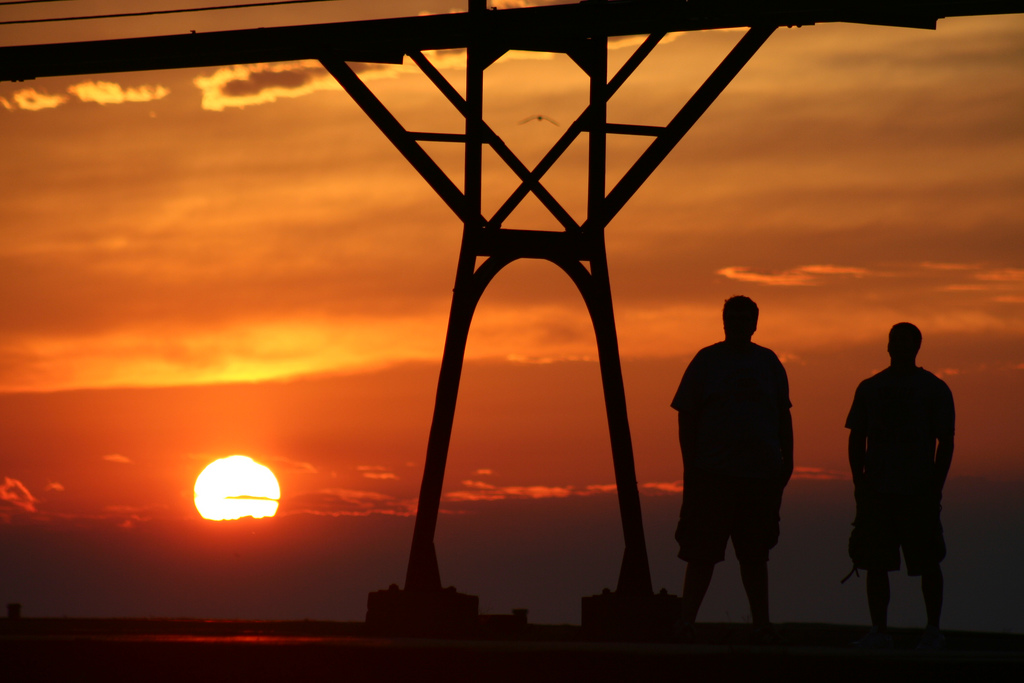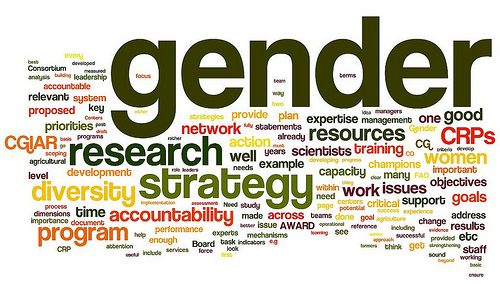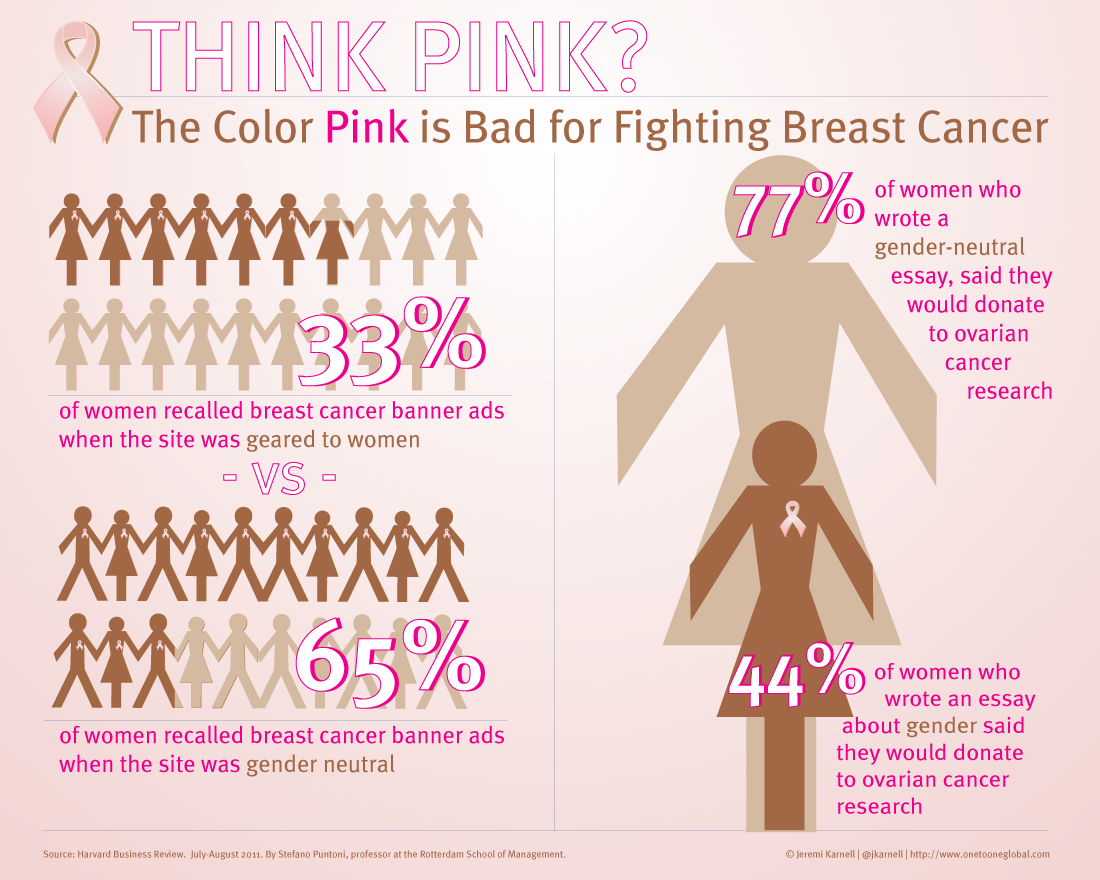
As much as world change may be about politics or economics, as its heart it’s a creative proposition. It’s about insight, engagement and persuasion. It’s about ideas that are imagined, communicated and delivered in ways that move individuals, communities and whole societies to change the way they think and act. It’s about marketing.
How to Get Involved
Creative for Good

image courtesy of swamibu
What’s in a name? That which we call rose. By any other name would smell as sweet.
“I really think that it is time to rename the movement.” Phillip Kotler told the International Social Marketing Association in an interview celebrating a visionary and how he hopes the industry may advance.
#SocialGood Revels in Gray Mass
SocialButterfly recently refreshed to reflect the industry’s growth and relevancy in the social innovation space (and vice versa). Thus, we’re encouraged by Kotler sharing that he plans to “talk about the interrelations between social marketing, social entrepreneurship, social innovation and other expressions of social activism” at the upcoming World Social Marketing Conference in Toronto, Canada.
Kotler goes on to share that we as social marketers “need to join forces with others who want to create a better world and join our methodologies with their methodologies.” The world is not black and white. The beauty emerges in the gray, the intersections of unsuspecting characters and places.
All About Attitude
Kotler’s interview also reminds us the badge true social marketers wear, and it’s stitched with attitude. Kotler shares that “true social marketers view social marketing comprehensively to include the 4Ps versus the many who develop communications in an effort to influence change.” As I also teach my students, he shares that the difference lies in the attitude and mindset we wear as we approach our work.
How do you feel about the state of the current social marketing movement?
]]>Where do social marketers get their inspiration?
In an attempt to share how social innovation and social marketing intersect with a colleague of mine, the colleague responded something along the lines of: “I don’t get why it matters. Social innovation sounds like everything we’re already doing in social marketing.”
Exactly. Social innovation touches on everything we’re doing in the social marketing field and vice versa. It matters.
The momentum is building. Case in point: The most popular SocialButterfly post from 2012 is actually SB’s category of posts on social innovation. Social marketers, meet social innovation. Social innovations, meet social marketing. You’re welcome. Both of you offer a world of inspiration to the other.
A Word on Defining Social Innovation
Definitions for social innovation are broad and often changing given no universally accepted definition exists (something we social marketers can relate to). A good guide is the Stanford Social Innovation Review’s updated definition of social innovation. They share:
Our complete definition of social innovation: A novel solution to a social problem that is more effective, efficient, sustainable, or just than existing solutions and for which the value created accrues primarily to society as a whole rather than private individuals. A social innovation can be a product, production process, or technology (much like innovation in general), but it can also be a principle, an idea, a piece of legislation, a social movement, an intervention, or some combination of them. Indeed, many of the best recognized social innovations, such as micro-finance, are combinations of a number of these elements.
Canada’s Centre for Social Innovation shares that simply, social innovation “is an idea that works for the public good.” Their fuller definition includes references to creating benefit to both “people and planet”, being “systems-changing”, sustainable and changing perceptions, behaviors and structures. Sound familiar? How do you define social innovation? The video above shares how some leading minds defined back in 2011.
Top Posts of 2012
Rather than share SocialButterfly’s top posts, I’ve curated some of the top posts relevant to both the art and science behind social change, touching on both social marketing and social innovation:
- The Most Dynamic Social Innovation Initiatives of 2012, Forbes
- 10 of the Year’s Best Designs for Social Good, Fast Company’s Co.Exist
- The Best of Social Marketing in 2012, On Social Marketing and Social Change
- The Top 10 Social Capital Blog Posts of the Year, Social Capital Inc.
- The Year in Social Media Research, Nieman Journalism Lab
- The 10 Best mHealth Papers of 2012, On Social Marketing and Social Change
- Social Media for Social Good’s Favorite Things of 2012, Armchair Advocates
- Best Cause Marketing Campaigns of 2012, Selfish Giving
Social marketers, you are social innovators! Social innovators, you will benefit from wearing a social marketing hat. Showing how social marketing and social innovation connect, SocialButterfly Mike Newton-Ward wrote a chapter on social marketing as part of a three-book series on social entrepreneurship that was published in late 2012, titled Social Entrepreneurship: How Businesses Can Transform Society.
We need to listen to one another. The world needs us to listen.
Inspired for 2013
Exploring the world of social innovation is where this SocialButterfly and social marketer finds her inspiration for 2013. This encompasses social design, social capital, social entrepreneurship, social value, social business and B corporations, the built environment movement, impact investing, philanthro-capitalism, studying innovation models and more.
Based on how you readers enjoy posts tagged with social innovation, it looks like I’m not alone.
What are your thoughts on social marketing and social innovation?
]]>

Is it too bold to suggest messaging doesn’t change behavior?
A colleague of mine shared an article titled, Should Public Health Campaigns Change Their Messages? based on a study by Statistics Canada. The study shares interesting insights on the relationship between messaging and behavior change based on its 12 years of longitudinal data from the Canadian National Population Health Survey among Canadians aged 50 or older with a chronic disease. Findings show that:
- 3 in 4 smokers with respiratory disease… do not quit smoking
- Most people with diabetes or heart disease… will not become more physically active, and
- For people diagnosed with cancer, heart disease, diabetes or stroke… virtually, no one will increase their intake of fruit and vegetables.
Indeed, the reviewer of the study shares: “As many experts in health promotion are well aware, knowledge and warnings are the least effective measures to change health behaviours.” Craig Lefebvre even dubs this The 5% Solution citing Leslie Snyder’s research. Yet–our bromance with messaging continues.
Social Marketing vs. Social Messaging
httpv://youtu.be/IECY9LJvTf4
Fast forward to 7:52 in the video above. Bill Smith, legendary social marketer, lays out the difference between social marketing and social messaging. He highlights how here in the United States, we’ve gotten ourselves enthralled with social messaging–missing out on key opportunities social marketing offers.
The key here is to remember that social marketing has four P’s – price, product, promotion and place, not just your promotional P. Read the latest social marketing manifesto from Social Marketing Quarterly for added thought on the full value of social marketing.
DTR the Bromance
The study and its review scratched an itch that’s been on my brain regarding messaging and (dare I say) our over reliance and investment in it. As, a messaging bromance can rapidly lead to awareness fever and trust in a one-and-done campaign. Hint: Our work is never done…
Sure–messaging has it role, and it’s important to pay attention to what types of messaging can be more effective than others. But perhaps you need to DTR it. Define the relationship. Put it in its due place and get back to work rolling up your sleeves and serving people.
]]>

image courtesy of gavinbell
Which one are you?
In a recent post announcing his new book, Craig Lefebvre shared the following insight for students of social marketing:
“There are many books to choose from to learn about social marketing. This book encapsulates how I have taught my students, by preparing them to be ‘chefs,’ not ‘cooks.’
Most social marketing texts are good at showing you ways to ‘cook,’ or prepare, a social marketing program with a basic menu of steps and tactics. My aim is higher – to provide you with frameworks you can use to create menus, new combinations of tastes, and most important, to assist you to learn a variety of ways to understand and work with the people you wish to serve…”
You can pre-order Craig’s book, Social Marketing and Social Change: Strategies and Tools for Improving Health, Well-Being and the Environment (I already did!). As a note of disclaimer, Craig and I now work together at RTI International, but if you’ve been following this blog over the years, you know I’m been a fan and pupil of his work for quite some time.
May we all aim to be masters of our kitchens, especially the messy ones.
]]>
“The detached Don Drapers of the marketing world cannot simply rely on creating deep and lofty brand awareness campaigns any longer,” says cofounder and CEO of HubSpot Brian Halligan. He’s right. This mantra not only applies to Madison Avenue, but also within the ivory towers of public health creatives as well.
There’s more.
“Marketing campaigns are not about winning awards for creative, building the flashiest websites, gaming Google for higher rankings, generating mounds of media coverage, or negotiating the lowest cost per thousand (CPM) in order to interrupt the largest audience. The job of a marketing agency is to produce results that impact the bottom line.” This from Paul Roetzer of PR20/20 in his new book, The Marketing Agency Blueprint.
Can we get an amen?
Serving the Bottom Line
Though both gentlemen talk more so about agencies serving the private sector, parallels to the public sector are easily made. Instead of being satisfied with awareness measures of reach and impressions, let’s aim for game changing results and talk about how our efforts result in:
- connections created
- behavior changed
- knowledge increased
- attitude influenced
- policy adjusted
To do so, we need to evolve the traditional mass media campaign model into one that serves the bottom line. Because even once you reach someone with your campaign, then what?
Building a bridge between awareness and action has been an ongoing pain point in public health and social change efforts. Using the mass media model, we’re really good at broadcasting our messages to reach people–often talking at them instead of with them. Yet even once reached, we stop the conversation.
At the CDC conference in August, some of my favorite brainiacs came together (shout out to Andre Blackman, Doug Weinbrenner, Nedra Weinreich, Jay Bernhardt and Mike Newton-Ward). We got into a conversation about “dosage.” Sure, that has to do with making an impact. But we also need to help voices be heard, information be shared and communities be built. For fellow theory-loving junkies, it’s about taking into consideration the whole social-ecological model.
Getting Our Hands Dirty
Traditional mass media models that follow TV PSAs, direct mail, radio announcements and the like allow us to safely distance ourselves from the nitty-gritty hard work of transforming our world. It puts us a hands distance from actually interacting with and serving our people. It’s time to roll up our sleeves.
Our work is no longer about building a one-and-done campaign, but about creating shared experiences and building movements. To build bridges, we have to walk side-by-side with those we want to not only reach, but truly engage.
Shifting Evidence
When you look at data such as knowing that 80% of U.S. adults look for health information online, 50% own smartphones, 20% or more own tablet devices and 10% have already downloaded a health app, you see a shift is occurring in how people are finding, using and sharing information. This demands that we too much shift our approach.
In May, I presented to the Metropolitan Washington Public Health Association on how new patterns and trends in communication offer new opportunities in engaging people in public health efforts. This shift isn’t about technology, but about people. People, empowered by digital media, can help evolve a campaign into a cause.
The presentation below presents three examples of how social media in particular can evolve a campaign into cause. Since I presented during National Women’s Health Week, this presentation focuses more so on this particular population.
The Social Media Shift: From Campaign to Cause from Alex Bornkessel
During the presentation, I shared additional data points on how positioning a public health effort as a cause when working with women can be especially effective. If you’re interested in this additional information, send an email to abornkessel@fly4change.com.
]]>

As the science behind social change evolves, how we approach our work must too. And sometimes, it is just semantics. But sometimes, it’s not. It’s a difference in mentality.
Take the idea of a “campaign” for example. The word campaign itself brings with it assumed processes, methods and associations. It also ranks up there with “awareness” as one of the most overused and over-relied upon words in public health. We can do better.
The word-of-mouth company, Brains on Fire, wrote a brilliant manifesto on the inherent differences between a campaign and a movement that can help point us in the right direction:
Campaigns have a beginning and an end.
Movements go on as long as kindred spirits are involved.
Campaigns are part of the war vocabulary. (target, launch, dominate markets…)
Movements are part of the evangelist vocabulary. (evangelize, passion, love…)
Campaigns are dry and emotionally detached.
Movements are organic and rooted in passion.
Campaigns rely on traditional mediums.
Movements rely on word of mouth, where the people are the medium.
Campaigns are part of the creationist theory—we’re going to create something cool
and people will talk about it.
Movements are part of the evolutionist theory—whatever we co-create with the fans
they can own and run with it, which will evolve over time.
Campaigns are you talking about yourself.
Movements are others talking about you.
Campaigns are an ON/OFF switch.
Movements are a volume dial—and there’s no zero.
Campaigns add to awareness.
Movements add to credibility.
Campaigns are “you vs. us.”
Movements are “let’s do this together.”
Next week, the University of Florida’s Center for Digital Health and Wellness will host its first Digital Health Communications Extravaganza. May we approach the week with the idea that we want sustainable movements of change focused on outcomes, impact and building relationships that strengthen communities.
Will you be at #DHCX? What other words rank up there on your list of over-used and over-relied upon?
flickr credit: JanneM
]]>
There, I said it. Social media in and of itself is not a strategy (gasp). It does not replace a solid marketing approach or even a communications plan. To be successful, it must be integrated into a larger strategic framework. This applies to organizations as well as programs, initiatives and (my dreaded word) campaigns.
Harvard Business Review recently published an article titled “Separate Social Media From Marketing:”
…we need to break out social media and talk about more than marketing and technology. Instead, we need to talk about what social media enables: the ability to collaborate in new ways — which is particularly important for business leaders interested in creating more collaborative, innovative, and engaging organizations. […]
The use of these platforms can truly transform a business by moving beyond brand marketing. Social media has enabled business leaders to think differently about how they engage and interact with both customers and employees. But just because you’ve opened the door doesn’t mean you’ve crossed the threshold into a new way of working, managing, and leading.
Your marketing team might have the best handle on social media, but what about other departments in your organization? When you change the focus from the technology to more about what the technology enables and what you want to achieve, then you change the conversation. You start to be strategic.
An Opportunity for Social Marketers
Craig Lefebvre on Twitter the other day shared an article on Paramount and how they are changing their approach to mobile from brand awareness to driving a behavioral outcome (buying a movie ticket). How we use social media should also evolve. In fact, how we view marketing and communications in general needs to evolve. Marketing isn’t something you think about “later,” it’s about so much more than communications and it doesn’t live within just one team. It’s integral to your success now and everyone plays a role.
I’ve written before about the “Word of the Year.” As December nears, I’m starting time for reflection early and designating all of December a time to ponder on the past, step back from the present and imagine tomorrow. My first thought? 2012’s”Word of the Year” might just be integration.
]]> A new research area around gender cues and its impact on awareness and fundraising efforts is just getting off the ground according to Dr. Stefano Puntoni, an Associate Professor of Marketing Management at the Rotterdam School of Management, in an interview conducted by Harvard Business Review.
A new research area around gender cues and its impact on awareness and fundraising efforts is just getting off the ground according to Dr. Stefano Puntoni, an Associate Professor of Marketing Management at the Rotterdam School of Management, in an interview conducted by Harvard Business Review.
“[Gender que research] is quite new…Over the past 10 years, researchers have put more effort into thinking about consumer welfare. What can we we do as researchers to help consumers make better decisions?” Dr. Puntoni said. “How can we effect change in areas like overeating and disease prevention? This is part of that. We could go more general with gender cue research, but breast cancer is such an important disease that I want to study this more on its own.”
Dr. Puntoni is talking about the findings from 10 different experiments over the past three years that suggest gender cues (such as the color pink) may be counter-productive to campaigns against women’s diseases, such as breast cancer awareness and fundraising efforts. The main insight from the research found that when women saw branding that included gender cues (like the color pink), the branding and ads were less effective. Why? Possibly because the subconscious goes into a state of denial, causing women to:
- Think they are less likely be at risk
- Say they are less likely to donate in reaction to a breast or ovarian cancer advertisement
The infographic below created by One to One Global highlights more of the Dr. Puntoni’s research:
Komen Responds
A spokeswomen for Susan G. Komen responded to the research in Ad Age saying that: “The research is food for thought but pink has worked well over the years,” she said. “I would say that in our experience for over 30 years now we’ve been pretty successful using pink. We’ve raised over $2 billion for research and community programs to help people with breast cancer. I don’t want to necessarily discount [the research]. It’s something to look at and consider, but our historic experience has been that we’re doing okay with the pink.”
The AdAge article continues:
Susan G. Komen, who died of breast cancer in 1980, also wore a lot of pink, the spokeswoman said, forming a strong association for her sister Nancy G. Brinker, who later founded Susan G. Komen for the Cure. “It’s not just a random color we selected,” she said. “It actually reflects the connection between the two sisters and the promise that was made.”
Though some have seen success with the color pink specifically, the research around gender cues is “something to consider” for breast cancer and beyond. Just like there’s cause fatigue, perhaps there’s been so much success—that younger generations of women don’t see the risk or the need to donate.
What do you think?
“Never doubt that a small group of thoughtful, committed citizens can change the world.” Margaret Mead said this in the early 20th century. Who knew that in the early nineteen hundreds, she’d be quoting today’s science?
A new study conducted at the Social Cognitive Networks Academic Research Center (SCNARC) at Rensselaer Polytechnic Institute on how beliefs spread through social networks found that minority rules: Only 10% of a population needs to be convinced of a new or different opinion to change the beliefs of an entire community.
According to the article, there are two main take-aways for those in the public health space:
- Public health campaigns might do well to target a small percentage of a community.
- Getting an entire population to adopt a new belief might require simply convincing 10 percent to believe it first.
In an interview, Prof. Boleslaw Szymanski, director of SCNARC, was quoted saying:
“We suggested,” Sreenivasan said, “that instead of trying to convince everyone, it might make the most sense to target selectively the people who are open-minded enough to hear out the evidence and make up their minds rationally.”
Reading through the details of this study is fascinating and so many questions come to mind for future exploration:
- Is minority rule a good thing? This research helps us better understand the importance to develop messages, materials and services with a certain community in mind to help ignite a movement. However, taken to the extreme, one can’t help but wonder about this insight being applied with misguided intent.
- Is 10% the tipping point? Once you reach 10% of the population–is that the tipping point for spreading ideas through social networks and alter behaviors on a larger scale?
- Does this rule apply across the board? According to the article, the research is still in its early stages. It’s uncertain if this 10% rule will apply to all kinds of beliefs, especially political ones.
- How does this connect with influencer theory? So much has been said about the role of influencers: who they are and how to connect with them–and if that even matters. Craig Lefebvre made a good point during last week’s CDC conference that the hyper-focus on influencers leads to a “distraction from understanding who are the ‘influenced’ and what can we learn from them.” I tend to agree.
What about you–What’s your reaction to this research?
flickr credit: ThisParticularGreg


